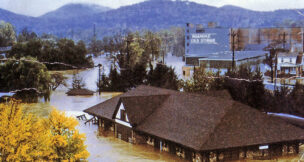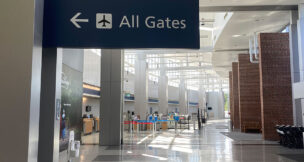Economic and cultural change
Philanthropy-supported arts have a big impact throughout Virginia
Economic and cultural change
Philanthropy-supported arts have a big impact throughout Virginia
On the northeastern edge of Virginia Commonwealth University’s downtown Richmond campus stands a gleaming, seemingly impossibly angular, zinc- and glass-fronted building that is itself as much a piece of art as the works contained within it.
Named by Architectural Digest as one of its most anticipated buildings in 2018, VCU’s $41 million, three-story, 41,000-square-foot Institute for Contemporary Art (ICA) debuted in April to throngs of art lovers who toured its inaugural exhibit, “Declaration.”
A mélange of socially conscious works, the show ranged from abstractions and aural installations to Paul Rucker’s “Storm in the Time of Shelter,” a veritable army of 52 menacing mannequins bedecked in outré Ku Klux Klan robes stitched in a variety of gaudy fabrics from camouflage to plaid.
Among the ICA’s other new works on display is a pink neon sign on the outside of the building crafted by Bahamian artist Tavares Strachan. It reads simply, “You Belong Here.”
The message may prove to be prophetic.
“I’m convinced that there will be people who will fly into Richmond [to see the ICA] who would have never come to Richmond … because this is one of those spots that lights up on their world map now,” says VCU President Michael Rao.
VCU raised $37 million toward the construction of the Institute for Contemporary Arts.
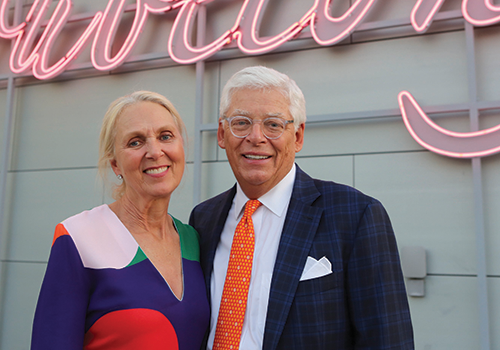 The institute “adds to the reputation that Richmond, Va., and the region is a forward-looking, progressive business community,” says Richmond philanthropist William A. Royall Jr., who donated $5 million to VCU for the project with his wife, Pam.
The institute “adds to the reputation that Richmond, Va., and the region is a forward-looking, progressive business community,” says Richmond philanthropist William A. Royall Jr., who donated $5 million to VCU for the project with his wife, Pam.
Fifteen years ago, Royall says, when he was running Henrico County-based higher-education marketing company Royall & Co., it was very difficult to recruit creative workers from bigger markets like New York or Chicago. “Today,” he says, “Richmond’s a place where the folks in the creative class and younger people want to be. …
There’s a thriving arts community here. It’s very intelligent. It’s an exciting time to be in Richmond.”
The arts are a big business, generating tourism and tax dollars and driving serious philanthropic largesse. Arts and cultural organizations spark more than $360 million a year in economic activity in the Greater Richmond region, supporting more than 10,700 full-time-equivalent jobs, according to the Washington, D.C.-based nonprofit Americans for the Arts. More than $210 million of that amount is generated by the spending of nonprofit arts and cultural organizations in the region.
Statewide, the story is much the same. In Virginia Beach, the arts account for $87.7 million in economic activity and employ nearly 3,000 workers. Nonprofit arts and cultural groups generate more than $270 million a year in Fairfax County, supporting more than 6,200 full-time-equivalent jobs.
Nationally, arts and cultural economic activity accounted for 4.2 percent of gross domestic product, or about $763.6 billion, and employed more than 5 million Americans in 2015, the most recent year studied, according to the U.S. Department of Commerce’s Bureau of Economic Analysis.
Picasso exhibit

Virginia’s capital city has long had a reputation as a cultural center. Virginia Commonwealth University’s School of the Arts is the top-ranked public university art school in the nation, according to U.S. News & World Report. And the Virginia Museum of Fine Arts (VMFA) has long been a stellar example of a public art museum.
But in 2011 the VMFA scored a coup by landing an exhibit of Picasso masterpieces, making Richmond the only East Coast city to get the exhibit. And that, Berry says, “started this whole transformation in the psyche of us as a tourist destination. And arts are a huge part of this. … and now we’re as cool as Austin and as cool as Portland.”
In subsequent years, Richmond has been lauded as a top destination by Frommer’s, Travel & Leisure, Lonely Planet, TripAdvisor and many others. The Picasso exhibit, which cost a reported $5 million and relied on corporate, individual and foundation donations, attracted more than 250,000 visitors and generated almost $30 million, including related spending on dining, lodging and retail.
During the past decade the city also has morphed into a dining and breweries powerhouse, with 900 independent, non-chain restaurants and more than 30 craft breweries.
The city’s three-day Richmond Folk Festival every October typically draws about 200,000 people per year. And city officials recently announced that in 2020 Richmond will play host city to the international Menuhin Competition, billed as “The Olympics of the Violin.”
It used to be that Wednesday nights in Richmond were the highest occupancy night for hotels due to business travel. Now, on Saturday nights “you cannot find a hotel room in Richmond. And we have 18,000 rooms,” says Berry.
He recalls with amusement how one Richmond restaurateur was complaining to him that his local customers couldn’t get a table. “It was a fabulous problem,” Berry says. “His locals were getting pushed out and displaced because there are so many people from out of town coming in to see the exhibits.”
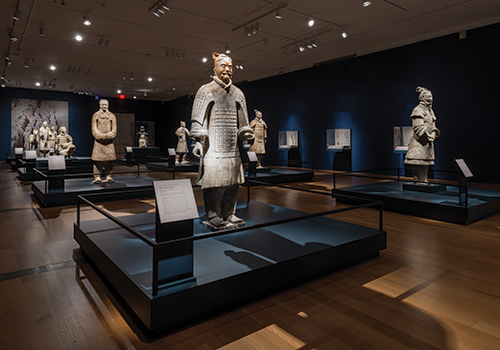
“Someone told me friends of theirs from Dallas, Texas, have come twice, flying here just to see the [Terracotta Army] show,” VMFA Director Alex Nyerges says. “And obviously [museum tourists] stay in our hotels, they eat in our restaurants. They are adding to the economy in a material and direct way when we do these exhibitions. We are obviously creating an economic engine.”
The VMFA expects to draw a “huge crowd from throughout the mid-Atlantic and beyond,” Nyerges says, when it premieres an upcoming exhibit on the works of “Nighthawks” painter Edward Hopper. Perhaps in anticipation of those future crowds, the museum also is renovating and expanding the 19th-century Robinson House on its grounds into a regional tourism center and offices.
A ‘good investment’
According to the nonprofit group Virginians for the Arts, arts patrons in Virginia spend 34 cents more per dollar on arts-related tourism expenses than average tourists.
Ed Harvey is president of the group, which lobbies the legislature on behalf of the 680 arts, education and cultural organizations that receive financial support from the taxpayer-funded Virginia Commission for the Arts.
Giving to the arts, Harvey says, “grows our economy. It’s a good investment. There are a little over 17,000 businesses that are arts-related in Virginia and they employ 70,000 people. So the arts are a vital part of each community and do help the economy.”
Harvey also is president of The Arts Center in Orange, a small nonprofit community arts center that hosts local exhibits and educational programs for children and the elderly. He’s seen firsthand how this arts center, supported largely by individual local donors, has revitalized Orange, a town with a population of about 5,000. “For quite some time,” Harvey says, “it was the only business open on Saturday afternoons on Main Street. And since then a lot more things have opened up.”
The economic impact of a thriving destination arts venue on a small city can be seen in Staunton. There the American Shakespeare Center sells 65,000 tickets per year to its performances of the Bard of Avon’s works at its Blackfriars Playhouse, a re-creation of a 16th-century indoor theater in London.
Annual tourism expenditures in the picturesque Shenandoah Valley city have risen by 91 percent, or about $24.6 million since the $3.7 million Blackfriars Playhouse was erected in 2001.
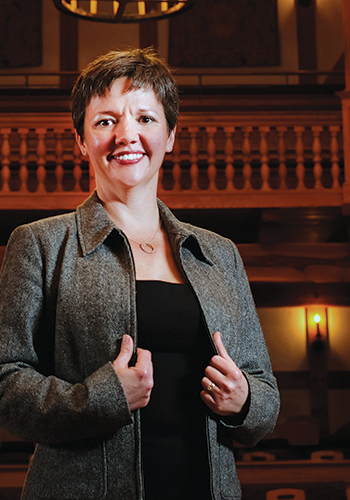
Before the theater located there, Staunton was primarily known as the home of Mary Baldwin University and the birthplace of U.S. President Woodrow Wilson. The center was one of the things that attracted the Heifetz International Music Institute to Stuanton in 2012. Benjamin K. Roe, the institutue's president and CEO, says, “We considered several locations around the country, but ultimately chose Staunton …” Besides the theatre, he noted that both both Mary Baldwin and the city of Staunton “are pro-active in their understanding and promoting the economic benefit of a strong arts, cultural and foodie scene.”
In 2011, Baltimore magazine praised the city as a “foodie paradise.” Visiting theater patrons are just steps away from Zynodoa, a popular farm-to-table restaurant. They can also stop in for dinner at The Shack restaurant, which Esquire magazine raved about as “incredible.” It’s run by chef Ian Boden, twice nominated as a semi-finalist for the prestigious James Beard award for Best Mid-Atlantic Chef. Theatergoers also often stay overnight at the Stonewall Jackson Hotel or one of the city’s many bed and breakfasts.
The theater received fundraising support from Staunton-area residents when it was getting off the ground, Wratchford says, but these days its donations largely come from outside the community. For fiscal year 2015 donations made up nearly $600,000 of the center’s $3.4 million annual revenue, with ticket sales and other program-related revenues accounting for more than $2.7 million.
While it’s good that the playhouse can be self-sustaining, she says that it does need to do a better job of reminding local residents of the important role the theater has played as an economic and tourism driver in revitalizing Staunton.
“One of the conversations that’s happening a lot in the nonprofit theater industry is the fact that we need to get better at telling that story of what kind of economic impact we have,” Wratchford says.
Over the course of a year, the American Shakespeare Center directly employs about 100 workers and it also gets most of its materials, concessions and wine from the surrounding region. “We try as much as possible to be locally and state-centered so that the money we’re bringing in is going back into our community and the commonwealth.”
Wolf Trap
One hundred and forty miles northeast from Staunton in Fairfax County, Wolf Trap National Park for the Performing Arts attracts more than 400,000 patrons per year to see everything from rock bands to ballet and musical theater, mostly held amid the stunning natural setting of its open-air, fir-and-pine Filene Center amphitheater.
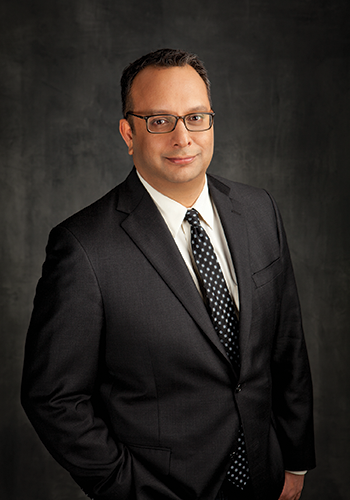
About two-thirds of Wolf Trap’s visitors come from Virginia and most of the rest come from Washington, D.C., and Maryland. Out of the roughly 75 events held at the park each year, about 25 are sell-outs, bringing in about 7,000 concertgoers per event. (Grammy Award-winning singer/songwriter Sting sold out three consecutive nights of performances there last year.)
Wolf Trap Foundation employs about 80 full-time workers plus a fluctuating number of seasonal employees during its summer concert seasons. In 2015, charitable contributions made up $10.8 million of its $33.7 million annual budget, with $19.3 million coming from ticket sales and related income.
While Wolf Trap’s direct and indirect economic impact on Northern Virginia is significant, employers in the region also find it valuable because of the role it plays in helping to attract a well-educated workforce. Wolf Trap provides educational outreach programs that engage children in learning activities via the performing arts. The foundation’s corporate contributors include The Boeing Co. and Northrop Grumman Corp.
“Our early childhood program is very much focused on STEM education,” Manocha says. “Given the tech corridor and the contracting community and the defense industry in this area, there’s a keen awareness that STEM skills are going to be vitally important.”
Another driver of corporate philanthropy to Wolf Trap, he says, is the business community’s recognition that Wolf Trap is an excellent amenity that can be used when selling the region to prospective employees.
“When I talk to business leaders who are moving their companies out to Tysons, who are thinking about their workforce … they are very conscientious about what are going to be the levers that they can pull to make this [region] an attractive proposition,” says Manocha.
Rao, Virginia Commonwealth University’s president, agrees that the arts enjoy strong corporate support because of the way that artistic entities can enhance a region’s quality of life. It’s valuable for attracting in-demand millennials to the area workforce, as well as luring new students, faculty and researchers to VCU, he says.
Rao thinks that the ICA’s unique niche as a haven for cutting-edge new artists will significantly increase philanthropic giving for the arts at VCU. “I think people are going to want to make large investments in this because they recognize the difference that it will make not just at VCU … but certainly Richmond and, I think, the commonwealth,” Rao says.
Nyerges at the Virginia Museum of Fine Arts, points out that corporate financial underwriting for local arts is a sound investment in building the amenities desired by the workforces of Richmond’s Fortune 500 companies. Producing and presenting special exhibitions such as Terracotta Army is expensive and can only be accomplished through corporate, individual and foundation support. Major corporate contributors to the Virginia Museum of Fine Arts include Altria Group, Dominion Energy and WestRock Foundation.
“Altria has thousands of employees, and WestRock has thousands of employees,” Nyerges says. “The organizations that support the arts obviously are able to attract better talent to move to Richmond and then stay in Richmond and be happy they live here. So you know, it’s one of those gifts that keeps on giving.”
i











